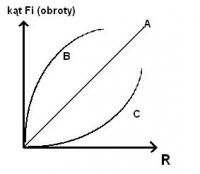I know that there are different markings of the potentiometers
e.g. 2.2k - A; 2.2k - B
How are they different ??
There is also a "W" marking and I care about it the most because I need such 100k-W, and I can't get it. The guy in one skep told me that this is the first time he has heard of such
e.g. 2.2k - A; 2.2k - B
How are they different ??
There is also a "W" marking and I care about it the most because I need such 100k-W, and I can't get it. The guy in one skep told me that this is the first time he has heard of such



